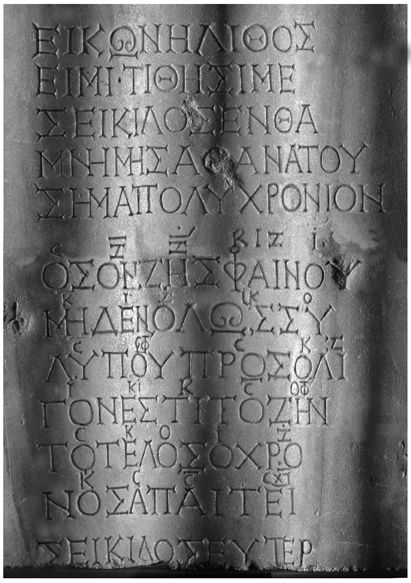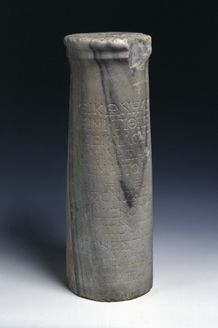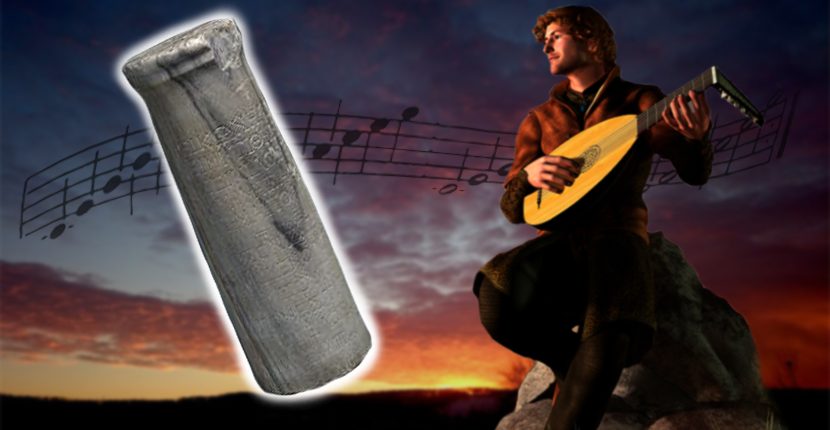The ancient world was filled with music and singing from the time of the earliest civilizations and the Seikilos Epitaph is the oldest surviving record of this. From the ecstatic chanting of shamans to early instruments such as lyres, pan pipes, and kitharas that echoed between the walls of temples and palaces. There is, no doubt, a mound of archaeological evidence that testifies how integral music was to the ancients’ way of life, but rarely have we been able to accurately and entirely reconstruct pieces of music that were played in those lost worlds.
However, there have been a few successes. In the 1950s, archaeologists discovered fragments of clay tablets in the ancient city of Ugarit, in northern Syria. On examining these, it was concluded that some of the cuneiform script denoted musical symbols. One almost complete tablet was painstakingly pieced together to reveal the Hurrian hymn to Nikkal, the Semitic goddess of the orchards (fruit and fertility). It is the oldest known piece of musical notation and includes lyrics, a sequence of notes to be played on a harp-like instrument, as well as detailed instructions to the musician regarding intervals and tuning.
Only one of the 29 tablets found at the site, denoted h.6, was well enough preserved to allow reconstruction of the mystical melody. Several versions of the song have been produced, but we can only listen to a small part of the Hurrian hymn.

When it comes to the oldest surviving complete musical composition, a song that we can play and enjoy in its intended clarity and completeness, that is a legacy of the ancient Greeks. The Seikilos epitaph, discovered in 1885 at the site of the ancient city of Tralles (modern-day Aydın, Turkey), is dated to somewhere between the 2nd century B.C. and the 1st century A.D.
Perhaps the survival of the musical piece owes partially to its brevity. The English translation of the lyrics are distilled into just four lines:
As long as you live, shine,
Let nothing grieve you beyond measure.
For your life is short,
and time will claim its toll.
The marble stele on which the lyrics and musical notation were engraved also bears an inscription that approximately translates as “I am a tombstone, an image. Séikilos placed me here as a long-lasting sign of deathless remembrance.”

As the name suggests, this song was dedicated in the memory of a loved one, in this case, the wife of the composer, Séikilos. Although it is an epitaph and there is an expectation it should evoke feelings of sadness or nostalgia, the lyrics sound rather uplifting. Like a memento mori, the lines inscribed rather remind us that everything in life is transient and that our days should be fully grasped and well-spent.

Because of the song’s shortness, the ancient composer was able to carve the entire piece on the tombstone’s surface, precisely how the song was reintroduced to the modern world when it was excavated.
The Seikilos epitaph is dated many centuries after the Hurrian hymn; however, at least for now, it remains the earliest known fully preserved musical work in the world. It is also the sole complete such work that has been saved from Ancient Greece.
The type of notation used for the song was quite common among the ancient Greeks, though experts debate the musical system of the piece; it was written in Phrygian or lastian tonos, two distinct modes in the evolution of ancient Greek music. The musical styles are one of the arguments why some claim the song was created as early as 200 B.C.
Nevertheless, it is indisputable that the Seikilos epitaph provides us with a unique look back to a melody of the ancient Greeks. We can still perform this piece today with the same authenticity of back then. The stele on which the text and notations are inscribed can be nowadays seen in the Department of Antiquities of the National Museum of Denmark, in the country’s capital of Copenhagen.
